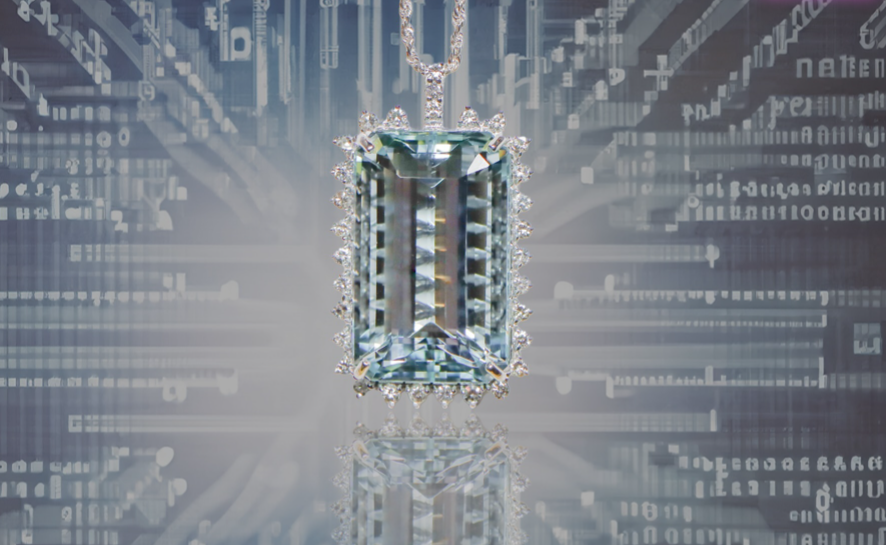KEY POINTS
J&M Jewelry, a Texas-based jewelry manufacturer, has embraced Web3 by announcing the release of its first non-fungible token (NFT) drop.
The company’s debut release features a 36-carat “Emerald Cut Aquamarine Diamond Halo” pendant, crafted from 14k white gold and featuring a genuine emerald cut aquamarine weighing 36.77 carats encircled by a halo of round diamonds.
Accompanying the physical jewelry piece is an NFT artwork titled “Aqua Beach NFT1 By J&M Jewelry,” which functions as a certificate of ownership for the pendant.

This piece is currently available for purchase on the official website for $22,000.
The company has hinted that this launch marks the beginning of a series of jewelry releases complemented by NFTs.
While this marks J&M Jewelry’s first foray into the Web3 space, other players in the jewelry industry have already leveraged blockchain and NFTs to their advantage.
In 2022, Bulgari collaborated with Temera, Luxochain, and Polygon to introduce an NFT series inspired by its latest high jewelry collection. Similarly, companies like Harry Winston and Swarovski have filed trademark applications to explore the NFT and metaverse realms.
The watch industry has also seen NFT initiatives. For instance, in 2022, Breitling introduced its new Super Chronomat Automatic 38 Origins watch alongside an NFT to track the watch’s chain of custody.
These initiatives highlight the benefits of leveraging NFTs to authenticate products and provenance, particularly within the luxury sector, where customer trust is paramount. Beyond serving as mere “proof,” NFTs enable companies to foster deeper engagement with customers, fostering communities and enhancing loyalty through rewards and exclusive benefits.
Despite experiencing waning interest in 2023, NFTs appear to be regaining momentum this year, evidenced by recent upticks in activity and noteworthy transactions, such as the recent sale of the CryptoPunks #3100 NFT, which fetched over $16 million.


